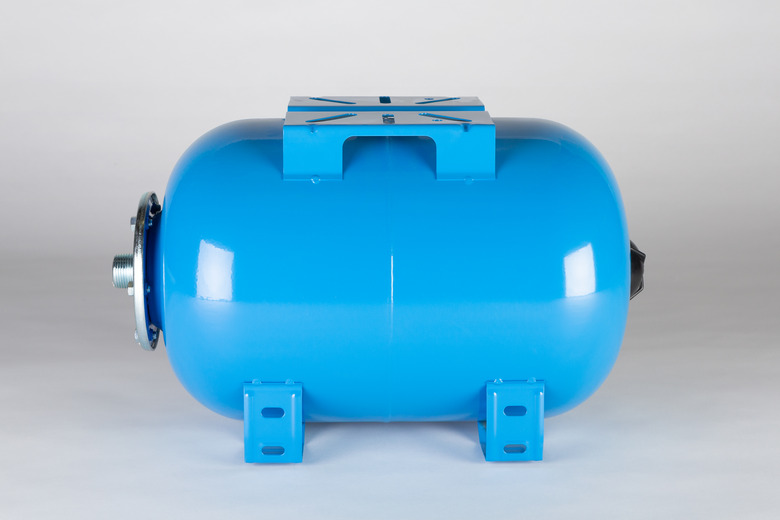My Well Water Pressure Tank Is Leaking. What Do I Do?
Water leaks on anything in your home is always a concern. A leak coming from your well water pressure tank can be simple or it can be complicated. A leak could be a direct sign of other issues that can be easily overlooked yet easily fixed. Knowledge of how your well system pressure works and good observation is the best way to get started with diagnosing any problem.
What Is a Well Pressure Tank?
Well water tanks are fairly simple in design. Basically it is a tank with an internal bladder separating the tank into two chambers; the lower chamber contains water, and the upper chamber contains air. As water flows into the bottom of the tank, under pressure supplied by the well pump, the air in the top of the tank is compressed, raising the tank pressure. When the tank reaches the set pressure level (called the cut-in pressure), the pump stops pumping water, and the air pressure in the tank pressurizes the water for the house. As the water is used and the air pressure drops to a low set point (called the cut-out pressure), the pump kicks on again and restarts the cycle.
This tank system maintains constant pressure to your home's water supply system. A ruptured bladder can cause a multitude of issues, such as pump cycling, leaks, and low or inconsistent water pressure.
Air Pressure Setting
The pressure switch is what tells the pump to turn on at the cut-in pressure and to turn off at the cut-out pressure. This is a mechanical device directly attached to either the tee at the base of the tank, or sometimes it is part of the pump itself. Pressure switches typically have a cut-in pressure of 30 or 40 psi and a cut-out pressure of 50 or 60 psi.
Air is added to the tank through a valve stem that looks just like the air valve on a bicycle or car tire. Valve is also used to check the tank pressure. To test for a failed bladder, turn off the well pump, then drain the tank by letting a faucet run until water stops flowing. Check the tank pressure with a tire pressure gauge; it should be 2 psi less than the cut-in pressure of the pump. If the air pressure is too low, or if water comes out of the air valve on the tank, this is an indication that the bladder may have failed; if so, the tank must be replaced.
What Else Could Leak?
Built into the tee at the base of the tank is a series of devices that make up the rest of the system. The first item coming from the well pump often is check valve. This helps ensure that water remains in the well pump piping, keeping the pump primed. If this is leaking then it will need to be replaced.
Next is the pressure switch and a pressure gauge, which work together to maintain the proper tank pressure. The gauge can sometimes fail or leak but is easy and cheap to replace. Some systems also have a safety relief valve that can bleed off pressure from the tank if the pressure gets too high. A tripped relief valve releases water from the tank, and this can look like a leak at the base of the tank, so be sure it's the relief valve and not a leak in the tank. If this valve is bleeding off, take note of the pressure on the gauge. If the pressure gauge reads higher than that indicated on the relief valve then your pressure setting might be too high. Make the appropriate adjustments and recheck after letting off some pressure. If you find that the relief valve discharges after the adjustment, replace the valve.
Other components that are good to know about are the drain valve and system isolation valve. The drain valve is used to do exactly that, drain the system. Much like an outdoor water faucet these too can fail and cause a leak. Another cheap and simple fix.
The system isolation valve isolates the tank assembly from the rest of the home's piping. Depending on the style of valve used, this can also fail. The isolation valve is typically located between the pressure switch and the water pipe leading to the house. This valve can either be repaired or replaced depending on the style of valve used.
Well Water Pressure Tank Longevity
Well water pressure tanks can last for many years. Specifically Amtrol WX or Well-X-Trol tanks have a seven year limited warranty but the average life is 10-15 years. The longevity is directly related to the quality of the tank you have.
